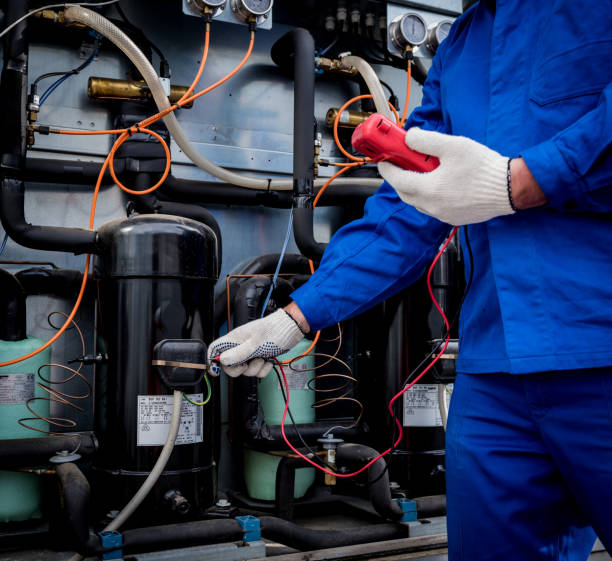Chiller Plant Testing
Chiller testing refers to the process of evaluating the performance, efficiency, and functionality of a chiller system.

Chillers are devices used for cooling water or other fluids in industrial, commercial, and residential applications. Proper testing ensures that the chiller operates optimally, meeting design specifications and performance requirements. Here’s a general overview of chiller testing:
Performance Testing: This involves assessing the chiller’s cooling capacity, efficiency, and energy consumption. Performance testing typically includes measuring parameters such as inlet and outlet temperatures, flow rates, power consumption, and pressure differentials.
Functional Testing: Functional testing checks the various components and systems within the chiller to ensure they are operating correctly. This includes testing of compressors, condensers, evaporators, pumps, valves, controls, and safety features.
Load Testing: Load testing involves subjecting the chiller to different operating conditions and loads to evaluate its performance under varying scenarios. This may include testing the chiller at full load, partial load, and part-load conditions to simulate real-world usage.
Efficiency Testing: Efficiency testing assesses the chiller’s energy efficiency and coefficient of performance (COP). This involves comparing the actual energy consumption with the expected energy consumption based on design specifications.
Leak Testing: Leak testing is essential to ensure there are no refrigerant leaks in the chiller system, which can lead to efficiency loss and environmental concerns. Various methods such as pressure decay testing, helium leak detection, and ultrasonic testing may be used for leak detection.
Safety Testing: Safety testing verifies that the chiller operates safely and complies with relevant safety standards and regulations. This includes testing safety features such as pressure relief valves, overcurrent protection, and refrigerant leak detection systems.
Control System Testing: Control system testing evaluates the performance of the chiller’s control system, including sensors, actuators, programmable logic controllers (PLCs), and human-machine interfaces (HMIs). This ensures proper operation and integration with building management systems.
Documentation and Reporting: Comprehensive documentation of test procedures, results, observations, and recommendations is essential for quality assurance and compliance purposes. A detailed test report should be generated following chiller testing, outlining any issues identified and proposed corrective actions.
